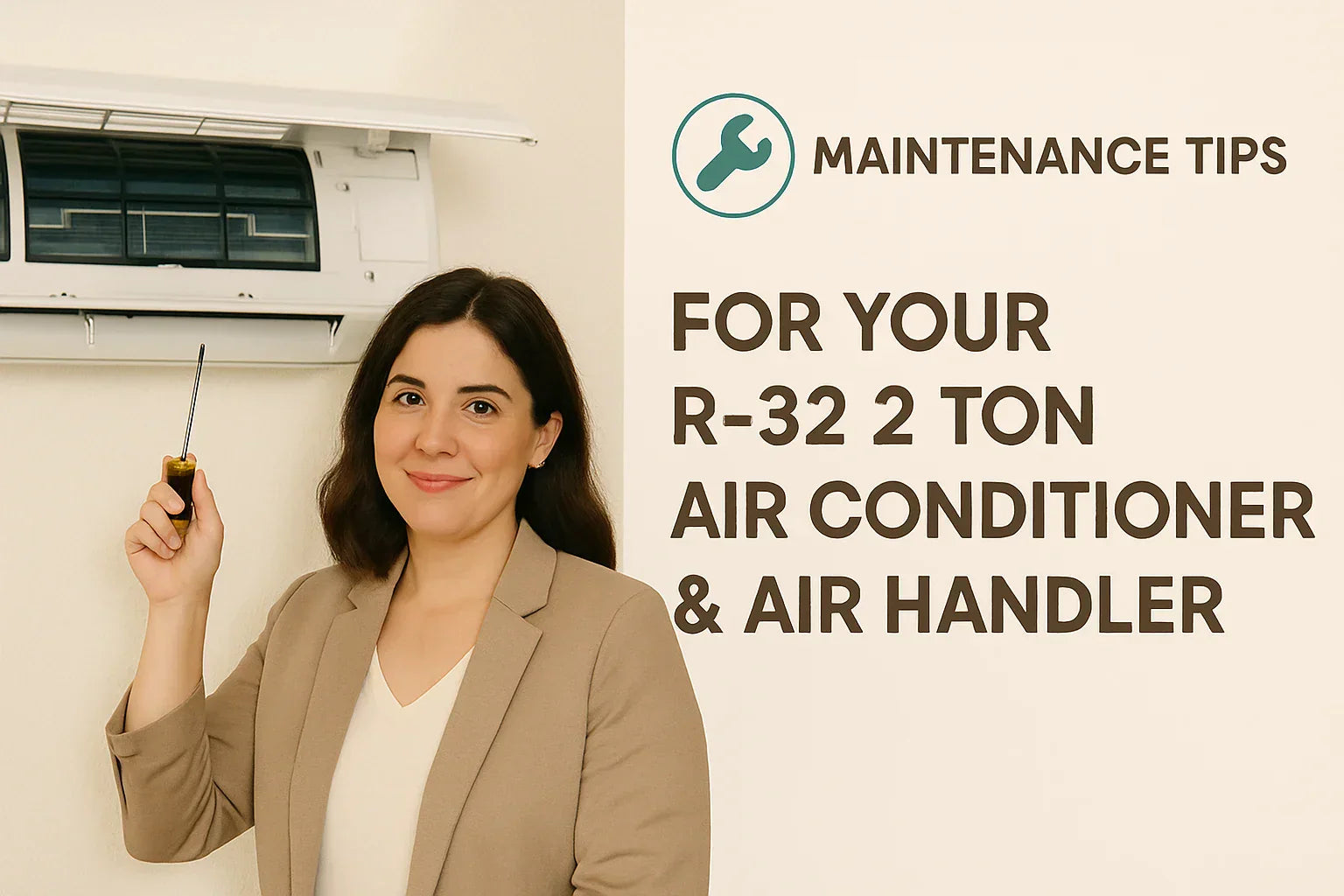🧰 Why Regular Maintenance Matters More with R-32
With advanced refrigerants like R-32, proper maintenance ensures:
-
Maximum energy efficiency
-
Long system lifespan
-
Safe operation (especially for mildly flammable refrigerants)
-
Reduced repair costs
-
Optimal indoor comfort
According to the U.S. Department of Energy, routine maintenance can reduce AC energy consumption by 15%.
🗓️ Basic Maintenance Schedule for Homeowners
| Task | Frequency |
|---|---|
| Replace filters | Every 1-3 months |
| Inspect outdoor unit | Monthly visual check |
| Clean coils | Annually |
| Schedule professional tune-up | Annually |
| Inspect condensate drain | Seasonally |
Use the Energy Star Maintenance Checklist to track your regular tasks.
🧽 Filter Maintenance: First Line of Defense
Why Filters Matter:
-
Prevent dust and debris buildup
-
Protect coils and internal components
-
Ensure healthy indoor air quality
-
Optimize airflow efficiency
Pro Tips:
-
Upgrade to MERV 11 or MERV 13 filters for better IAQ
-
Ensure filters fit snugly to prevent bypass air
🔎 Coil Cleaning: Protecting R-32 System Performance
Indoor Evaporator Coil
-
Access via air handler service panel
-
Use manufacturer-approved foaming coil cleaner
-
Protect electrical components during cleaning
Outdoor Condenser Coil
-
Gently rinse with low-pressure hose
-
Remove leaves, dirt, and debris
-
Keep 2-3 feet of clearance around the unit
Follow manufacturer guidance from the AHRI Certified Directory for proper coil maintenance procedures.
⚠️ Refrigerant Leak Prevention & Detection
Since R-32 is mildly flammable (A2L rating), early leak detection is critical:
-
Watch for sudden drops in cooling performance
-
Look for oil stains around line sets and connections
-
Use professional electronic leak detectors
-
Schedule prompt repairs for suspected leaks
The EPA Refrigerant Management Rules outline leak inspection requirements for residential systems.
💦 Condensate Drain Maintenance
-
Flush the drain line with vinegar or bleach solution every 3-6 months
-
Clear algae and clogs promptly
-
Ensure condensate pump (if installed) operates smoothly
Neglecting this simple task often leads to water damage and expensive repairs.
🔧 Annual Professional Tune-Up Checklist
A licensed HVAC technician should inspect:
-
Refrigerant charge & pressure (per R-32 specs)
-
Electrical connections
-
Capacitor and contactor integrity
-
Compressor amperage draw
-
Coil cleanliness (deep inspection)
-
Airflow measurements
-
Duct leakage
-
Thermostat calibration
Use NATE-certified contractors for certified maintenance expertise.
🧯 Special Safety Notes for R-32 Systems
-
Ensure technicians have A2L refrigerant training
-
Maintain proper ventilation during repairs
-
Use approved recovery equipment for refrigerant evacuation
ASHRAE Standard 34 provides comprehensive safety classifications for refrigerant handling.
🌿 Indoor Air Quality (IAQ) Add-Ons Worth Considering
| IAQ Solution | Benefit |
| UV Light | Kills mold and bacteria |
| Ionization Systems | Neutralize particles & odors |
| HEPA Filtration | Capture fine particulates |
| Humidification Control | Balance seasonal humidity |
The CDC Indoor Air Quality Guide supports integrated IAQ improvements for healthier homes.
🏷️ Signs You May Need Repairs
-
Unusual noises (buzzing, rattling)
-
Frequent cycling on/off
-
Poor humidity control
-
Ice buildup on refrigerant lines
-
Unexplained spikes in electric bills
-
System age approaching 10-15 years
📣 Final Maintenance Best Practices Summary
| Task | Benefit |
| Filter changes | Efficiency, IAQ |
| Coil cleaning | Energy savings |
| Annual tune-up | Reliability |
| Leak checks | Safety, system lifespan |
| Drain maintenance | Prevent water damage |
With basic care, your R-32 2 Ton system can deliver 10-15+ years of efficient service with minimal repairs.
In the next topic we will read about: Can You DIY a 2 Ton R-32 System? What Homeowners Need to Know







